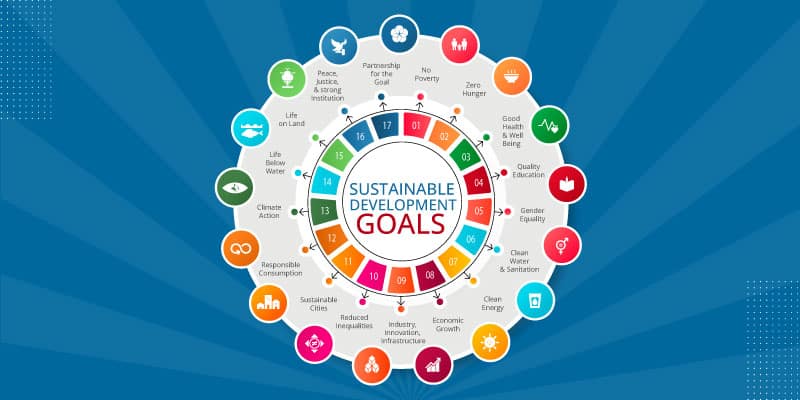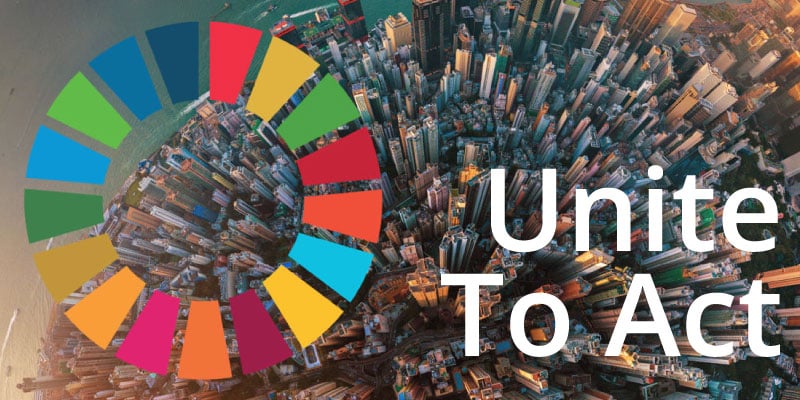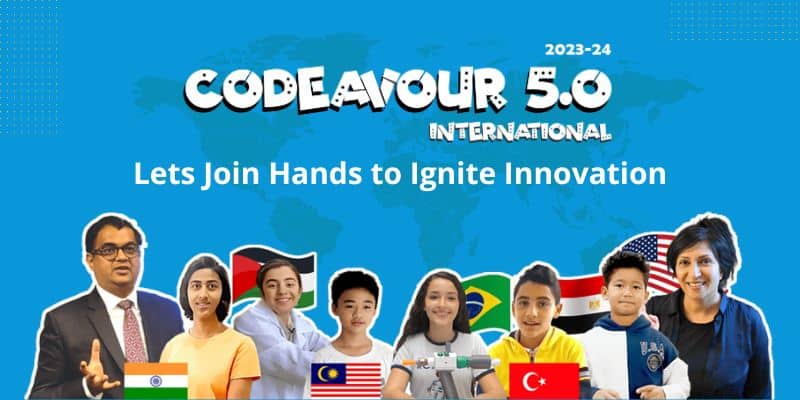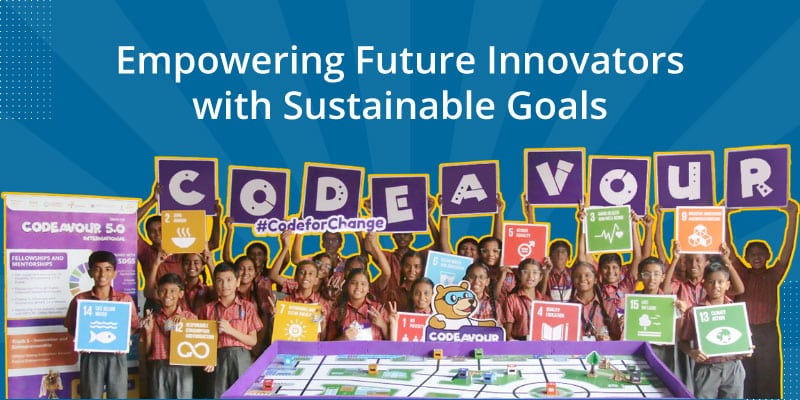The United Nations Sustainable Development Goals (UNSDGs) represent a global commitment to addressing some of the world’s most constraining challenges. In 2015, world leaders adopted 17 goals as part of the 2030 agenda for sustainable development. The SDGs aim to eradicate poverty, protect the planet, and ensure prosperity for all. Continue reading to grasp the 17 SDGs and their objectives. Additionally, discover how Codeavour, the biggest AI, robotics, and coding competition for students, aligns with the SDGs to foster a more sustainable and equitable world.
The Global Significance of the UNSDGs
The SDGs are crucial as they provide a universal framework for addressing global challenges such as poverty, inequality, climate change, and environmental degradation. They offer a roadmap for governments, organizations, and individuals to work together. As a result, we can achieve a more sustainable, equitable, and prosperous future for all. Here is a list of 17 goals adopted by the UN council:
- Goal 1 (No Poverty): The first SDG aims to eliminate poverty in all its forms by providing access to resources, education, and employment opportunities. Its goal is to ensure that no one is left behind.
- Goal 2 (Zero Hunger): Goal 2 ensures everyone can access sufficient, safe, nutritious food while promoting sustainable farming practices.
- Goal 3 (Good Health and Well-Being): This goal targets improved healthcare services, disease prevention, and mental health support to enhance overall well-being worldwide.
- Goal 4 (Quality Education): SDG 4 emphasizes equal access to quality education and lifelong learning to foster personal and societal growth.
- Goal 5 (Gender Equality): Goal 5 focuses on eliminating gender disparities and promoting women’s rights. It seeks to empower girls and women in all aspects of life.
- Goal 6 (Clean Water and Sanitation): This goal seeks to provide all communities with clean and safe drinking water and proper sanitation facilities. It ensures the availability and sustainable management of water and sanitation for all.
- Goal 7 (Affordable and Clean Energy): Goal 7 targets providing affordable, sustainable, and modern energy to everyone. It emphasizes renewable sources and energy efficiency.
- Goal 8 (Decent Work and Economic Growth): The goal seeks to foster sustained and inclusive economic growth. As a result, promoting job creation, reducing inequality, and ensuring decent working conditions.
- Goal 9 (Industry, Innovation, and Infrastructure): It promotes resilient infrastructure, sustainable industrialization, and innovation by encouraging investments in these areas to drive economic development and inclusivity.
- Goal 10 (Reduced Inequality): SDG 10 focuses on reducing inequality within and among countries by implementing policies and measures that empower marginalized groups and foster social inclusion. .
- Goal 11 (Sustainable Cities and Communities): This goal aims to develop inclusive, safe, and sustainable urban areas, ensuring that cities and human settlements provide adequate housing, transportation, and infrastructure for all residents.
- Goal 12 (Responsible Consumption and Production): Goal 12 advocates responsible resource management, waste reduction, and eco-friendly production practices, all of which contribute to ensuring sustainable consumption and production patterns.
- Goal 13 (Climate Action): SDG 13 emphasizes the critical need for immediate action to combat climate change by reducing greenhouse gas emissions, enhancing climate resilience, and addressing associated challenges.
- Goal 14 (Life Below Water): This goal centers on the judicious use of oceans, seas, and marine resources for sustainable development. It aims to protect marine ecosystems, fight overfishing, and conserve ocean biodiversity.
- Goal 15 (Life on Land): SDG 15 is dedicated to conserving terrestrial ecosystems, managing forests sustainably, combating desertification, reversing land degradation, and preserving biodiversity. Its objective is to safeguard Earth’s land resources for a sustainable future.
- Goal 16 (Peace, Justice, and Strong Institutions): Goal 16 aims to establish peaceful, inclusive societies by ensuring access to justice, strengthening institutions at all levels, protecting human rights, upholding the rule of law, and promoting accountable governance for sustainable development.
- Goal 17 (Partnerships for the Goals): The last goal, Goal 17, highlights the significance of global cooperation, financial assistance, and technology sharing to support the implementation of all SDGs. Moreover, it seeks to strengthen the means of achieving sustainable development through international partnerships and collective efforts.
How the SDGs Work Together
The SDGs are interconnected and mutually reinforcing, recognizing that global challenges are complex and interrelated. Achieving one goal often contributes to the advancement of others. Here are some examples of how these goals work together:
- Poverty and Hunger (Goals 1 and 2): Addressing poverty helps reduce hunger and vice versa. Improved access to education and job opportunities can lift people out of poverty and improve food security.
- Health and Education (Goals 3 and 4): Good health is essential for effective learning. When people have access to quality healthcare, they are better equipped to pursue education.
- Gender Equality and Economic Growth (Goals 5 and 8): Empowering the female workforce and promoting gender equality can promote economic growth and job creation.
- Climate Action and Life on Land (Goals 13 and 15): Combating climate change also helps protect terrestrial ecosystems and biodiversity.
- Peace and Strong Institutions (Goals 16 and 17): Building peaceful societies and strong institutions is crucial for effective global partnerships.
Codeavour in Alignment with the UNSDGs
Codeavour 5.0 International is a leading AI, Robotics, and coding competition for students aged 7-18. It aligns with the United Nations Sustainable Development Goals (UNSDGs). The international fest encourages young minds to tackle global challenges. It focuses on critical thinking, creativity, communication, and collaboration, the essential four C’s of 21st-century skills. By using tools like PictoBlox AI and Quarky, participants delve into AI, AR-VR, ML, coding, and Robotics. The competition emphasizes ‘learning by doing‘ in AI education and fosters interactive problem-solving in coding for kids.
Codeavour’s approach through exciting tracks and themes inspires students to solve real-world issues using coding and AI. It embodies the spirit of the UNSDGs, aiming for a more sustainable, equitable, and prosperous world. As we come together for these shared goals, we can transform our planet and secure a brighter future. The impact program strengthens the ideology of AI for All, advocating for inclusive AI education. Through activity-based learning, students play a part in creating a more equitable world. This initiative highlights the importance of AI and coding competitions for students. It’s a step towards an innovative and prosperous future.
In a Nutshell
The United Nations Sustainable Development Goals (UNSDGs) aim to address specific global challenges. These include poverty, inequality, climate change, environmental degradation, peace, and justice. Among these goals, key objectives include:
- Achieving gender equality.
- Fostering good health and well-being.
- Ensuring access to clean water and sanitation.
- Promoting sustainable industry, innovation, and infrastructure.
Codeavour, an international competition, aligns with the objectives of SDGs by inspiring students to use technology and transform ideas into reality. The new edition introduces two compelling tracks and themes, emphasizing technology’s role in education.
The Innovation and Entrepreneurship track transforms students into innovators and problem solvers.
The AI Robo City challenge in Track 2 involves a robotics competition where participants solve real-world missions.













